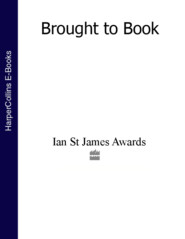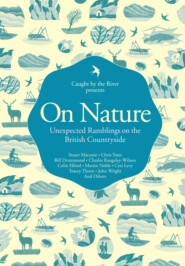По всем вопросам обращайтесь на: info@litportal.ru
(©) 2003-2025.
✖
Bird Brain: Over 2,400 Questions to Test Your Bird Knowledge
Настройки чтения
Размер шрифта
Высота строк
Поля
Every year for the past three decades, the proceeds from Birdfair have gone to a conservation project, selected and managed by the conservation charity BirdLife International. Through your support, these projects have helped to secure a future for some of the world’s most threatened bird species and habitats – here are the highlights …
Year: 1989
Project name: ICBP Stop the Massacre Campaign
Birds that benefit: Migratory birds in the Mediterranean, focusing on the European Robin Erithacus rubecula
Amount raised: £3,000 ICBP (rebranded BirdLife in 1993) aimed to tackle hunting and trapping with the first Birdfair project. Birdfair supported an education programme lead by BirdLife Malta, which generated a huge amount of publicity and media coverage in Malta. However, the battle to end illegal bird killing is ongoing.
Year: 1990
Project name: Helping Save Spain’s Doñana National Park
Birds that benefit: Eurasian Spoonbill Platalea leucorodia, Black-winged Stilt Himantopus himantopus, Greater Flamingo Phoenicopterus roseus
Amount raised: £10,000
Already beleaguered by agriculture and tourism, Doñana wetlands faced its biggest threat with the proposal of a huge tourist development: ‘Costa Doñana’. Birdfair funded a concerted campaign led by SEO/BirdLife (BirdLife in Spain) which successfully halted the development, and financed a visitor centre to promote ecotourism.
Year: 1991
Project name: Danube Delta
Birds that benefit: Dalmatian Pelican Pelecanus crispus (NT), White-headed Duck Oxyura leucocepala (EN), Pygmy Cormorant Microcarbo pygmaeus
Amount raised: £20,000 The Danube Delta’s incredible wetlands suddenly escaped the threat of drainage when the new administration declared it a World Heritage Site and a Ramsar Site. However, new wardens lacked basic equipment. Birdfair funded the provision of binoculars, boat engines, bird hides and other essential kit.
Year: 1992
Project name: ICBP Spanish Steppes Appeal
Birds that benefit: Great Bustard Otis tarda (VU), Little Bustard Tetrax tetrax (NT), Dupont’s Lark Chersophilus duponti (NT)
Amount raised: £30,000 Despite supporting three-quarters of the world’s Little Bustards, Spain’s sweeping grasslands faced destruction by large-scale irrigation schemes funded by the EU. The Spanish Steppes campaign was one of the first truly effective examples of European-level collaborative conservation across the newly remodelled BirdLife International partnership.
Year: 1993
Project name: BirdLife International Polish Wetlands
Birds that benefit: Aquatic Warbler Acrocephalus paludicola (VU), Corncrake Crex crex
Amount raised: £40,000 Birdfair funded the Polish Society for the Protection of Birds (OTOP, BirdLife partner) to update its directory of wetland IBAs (Important Bird and Biodiversity Area) and seek effective protection for these areas. Funds also went towards Poland’s first reserve in the Swina Estuary to protect Aquatic Warblers. Such efforts have slowed this species’ decline in central Europe.
Year: 1994
Project name: Project Halmahera
Birds that benefit: Standardwing Bird-of-paradise Semioptera wallacii
Amount raised: £41,000 In 1994, Halmahera was the largest Indonesian island not to possess any National Parks or other protected areas. Focusing on this little-known tropical paradise raised much-needed awareness. Birdfair funded research to pinpoint priority areas for protection. Sadly, civil unrest in the area disrupted the process, but BirdLife clung on, and the first National Park was declared in 2004.
Year: 1995
Project name: Moroccan Wetlands Project
Birds that benefit: Slender-billed Curlew Numenius tenuirostris (CR), Marbled Teal Marmaronetta angustirostris (VU), Audouin’s Gull Larus audouinii (NT)
Amount raised: £45,000 Sandwiched between sea and desert, the wetlands along the Moroccan coast are a lifeline for migrating waterbirds. But they are also under pressure from human use. Birdfair funded the better management of key sites along this route, including school and community engagement programmes.
Year: 1996
Project name: Ke Go Forest Project
Birds that benefit: Edwards’s Pheasant Lophura edwardsi (CR), Crested Argus Rheinardia ocellata (NT), Red-collared Woodpecker Picus rabieri (NT)
Amount raised: £50,000 Ke Go is the last remaining block of lowland forest in central Vietnam. In 1996, with the publicity and financial backing of Birdfair, the site was declared a nature reserve. BirdLife continues to work in this area to combat the ever-present threat of illegal logging.
Year: 1997
Project name: Mindo Important Bird Area Project
Birds that benefit: Black-breasted Puffleg Eriocnemis nigrivestis (CR), Andean Cock-of-the-rock Rupicola peruvianus
Amount raised: £60,000 In 1997, with the help of Birdfair, Ecuador’s incredibly species-rich Mindo cloud-forest was declared the first IBA in the whole of South America, launching BirdLife’s IBA programme in that continent. BirdLife worked with the local community, developing ecotourism as an alternative livelihood to destructive agriculture.
Year: 1998
Project name: BirdLife International Threatened Birds Programme
Birds that benefit: Blue-throated Macaw Ara glaucogularis (CR), Spoon-billed Sandpiper Calidris pygmaea (CR), Whooping Crane Grus americana (EN)
Amount raised: £120,000 With one in eight bird species threatened with extinction, Birdfair funded research to gather up-to-date information on their populations, creating the landmark book Threatened Birds of the World. This sparked public and political awareness and established BirdLife as the avian authority for the IUCN Red List.
Year: 1999
Project name: Rescuing Brazil’s Atlantic Forests
Birds that benefit: Seven-coloured Tanager Tangara fastuosa (VU), Alagoas Antwren Myrmotherula snowi (CR), Bahia Tyrannulet Phylloscartes beckeri (EN)
Amount raised: £130,000 43 of Brazil’s 103 threatened bird species depend on its dwindling Atlantic forests. The 1999 Birdfair project aimed to preserve them. Successes included Murici Forest being declared an Ecological Station. BirdLife’s activity in this country eventually led to the formation of the NGO SAVE Brazil, now a BirdLife partner.
Year: 2000
Project name: Save the Albatross Campaign – Keeping the World’s Seabirds off the Hook
Birds that benefit: Seabirds including the Wandering Albatross Diomeda exulans (VU)
Amount raised: £122,000 Albatrosses are the most threatened group of seabird, and one of the biggest threats is death on the baited hooks of long-line fisheries. Birdfair funded the launch of the Global Seabird Programme, which paved the way for BirdLife’s highly successful Albatross Task Force.











